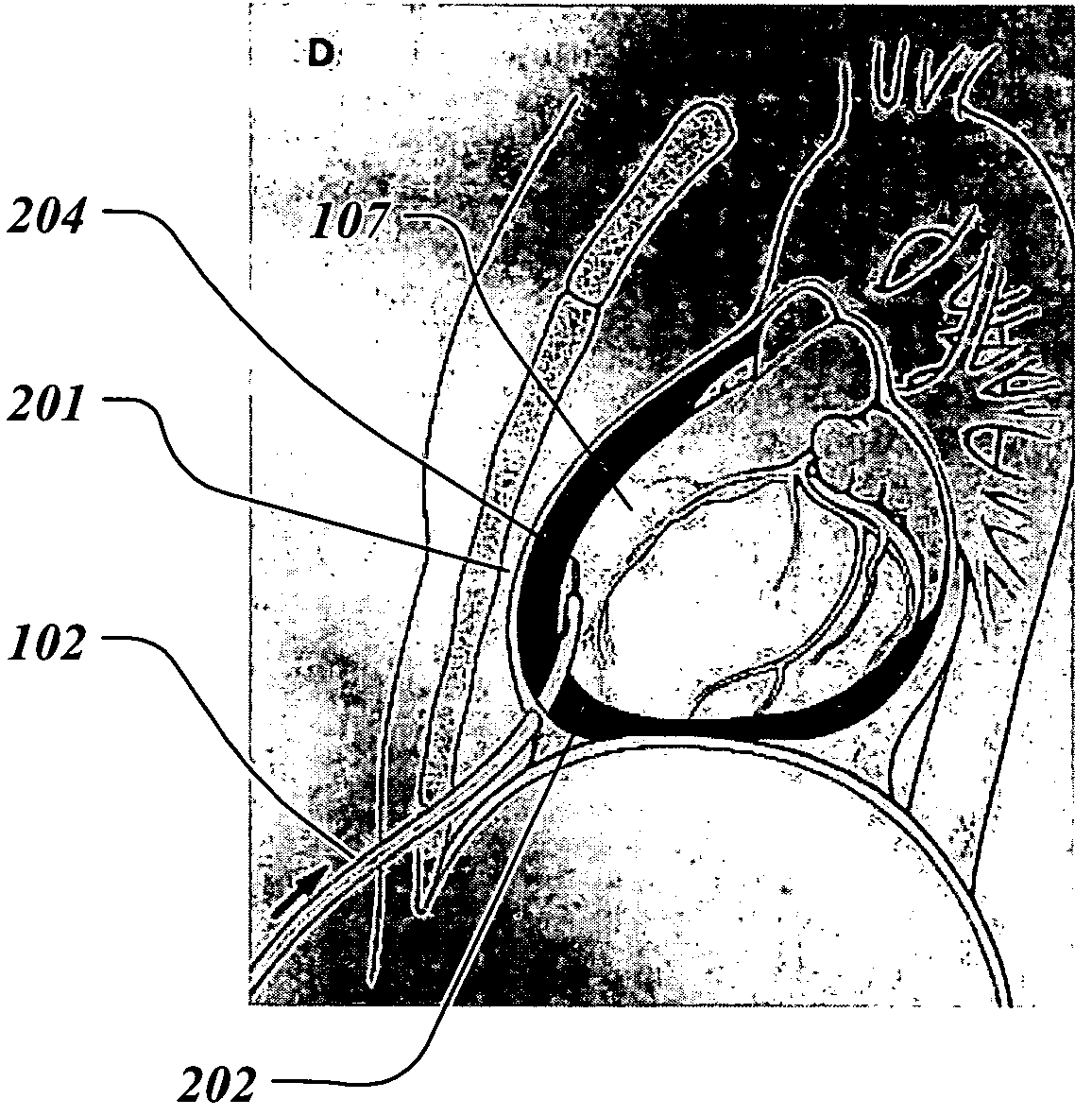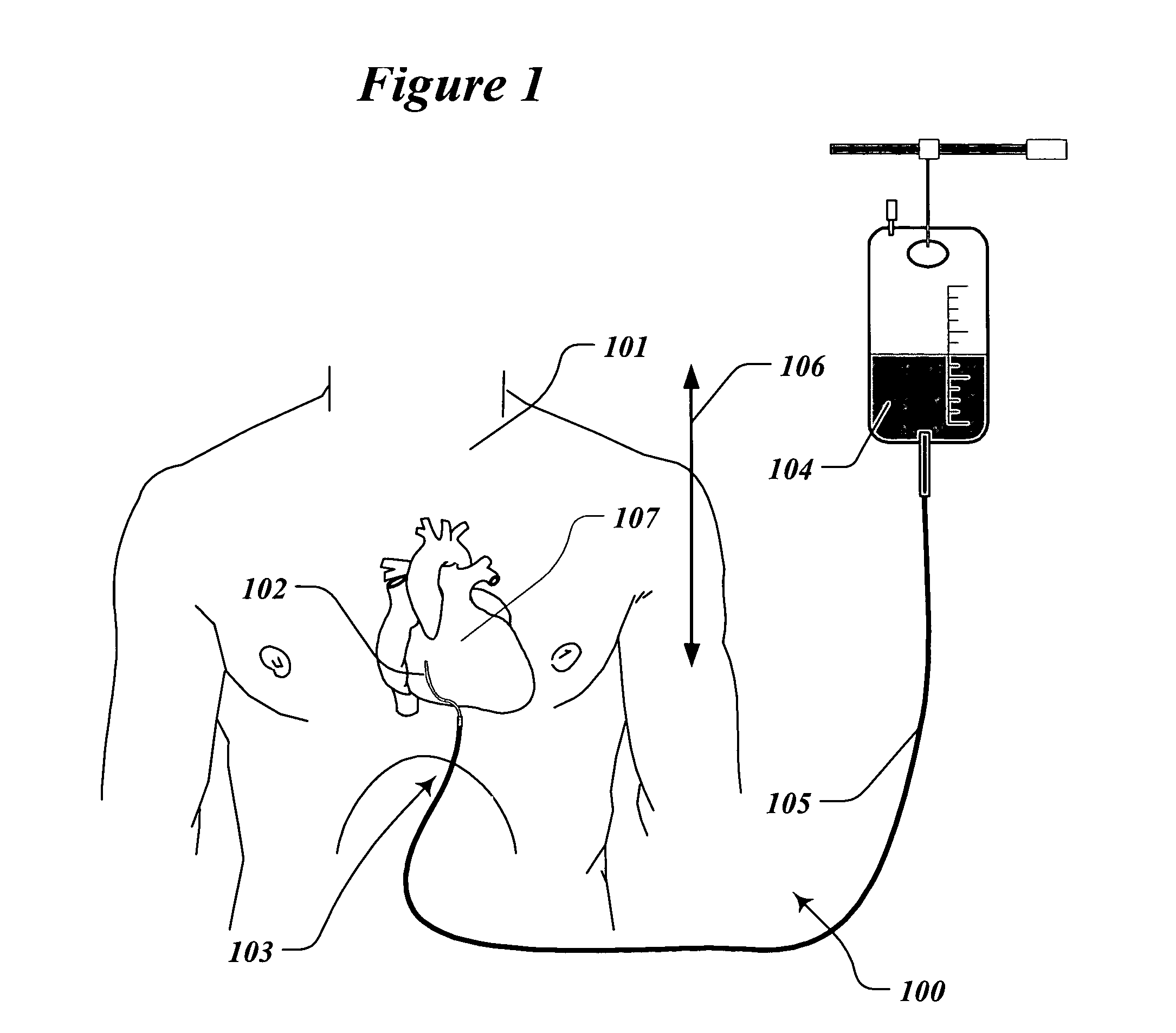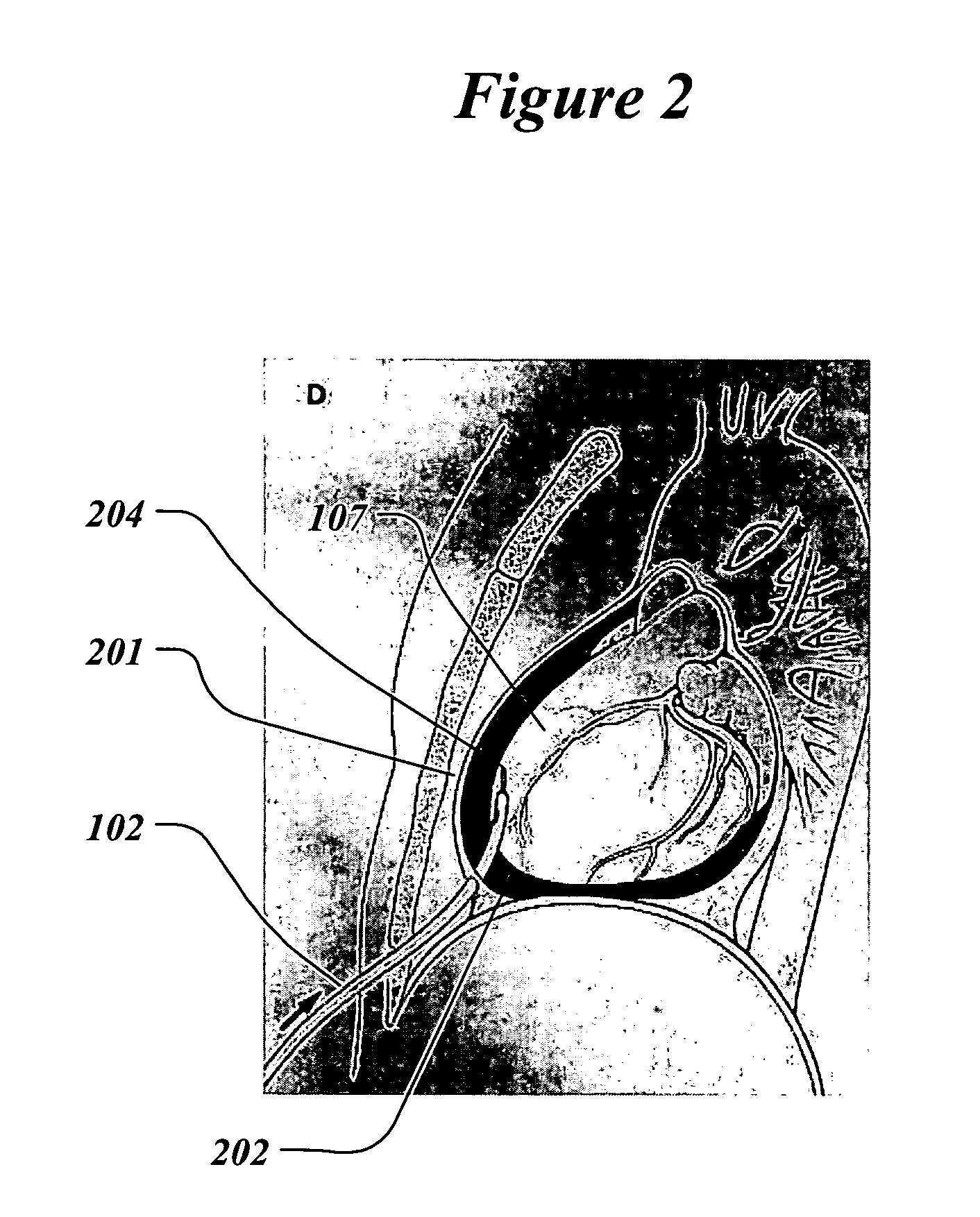Method and system to treat and prevent myocardial infarct expansion
a myocardial infarct and systemic technology, applied in the field of myocardial infarct expansion treatment and system, can solve the problems of reducing cardiac output, reducing cardiac output, and reducing structure collapse, so as to reduce the severity and complications of mi, reduce the stress of the infarcted ventricle, and reduce the severity of the infarct expansion
- Summary
- Abstract
- Description
- Claims
- Application Information
AI Technical Summary
Benefits of technology
Problems solved by technology
Method used
Image
Examples
Embodiment Construction
[0056]For the proposed clinical use, the capability of the preferred embodiment of the invention is to constrain the heart by controllably elevating hydraulic pressure in the pericardial sac.
[0057]FIG. 1 illustrates the treatment of a patient 101 with the system 100 for infusion of fluid into the pericardial sac of the heart. The infusion catheter 102 is partially inserted into the pericardial sac of the heart 107. Catheter 102 crosses the patient's skin in the xiphoid area 103. The distal tip of the catheter 102 has an opening and is in fluid communication with the pericardial (also called intrapericardial) space. The proximal end of the catheter is connected to the bag 104 filled with the hydraulic infusion solution such as sterile saline by the fluid filled tube 105. The height difference 106 between the patient's heart 107 and the level of fluid in the bag determines the hydraulic pressure in the pericardium. For example, if the hydraulic fluid has the specific gravity of water,...
PUM
 Login to View More
Login to View More Abstract
Description
Claims
Application Information
 Login to View More
Login to View More - R&D
- Intellectual Property
- Life Sciences
- Materials
- Tech Scout
- Unparalleled Data Quality
- Higher Quality Content
- 60% Fewer Hallucinations
Browse by: Latest US Patents, China's latest patents, Technical Efficacy Thesaurus, Application Domain, Technology Topic, Popular Technical Reports.
© 2025 PatSnap. All rights reserved.Legal|Privacy policy|Modern Slavery Act Transparency Statement|Sitemap|About US| Contact US: help@patsnap.com



